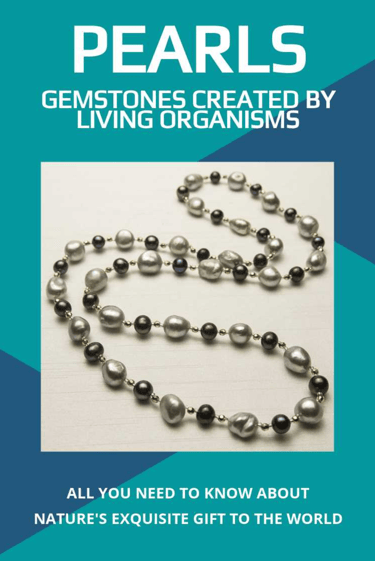The Rise of Cultured Pearls
Pearls have long been admired for their natural beauty and timeless elegance, but the way they are produced has undergone a remarkable transformation in recent years. Cultured pearls have revolutionized the pearl industry, offering a sustainable and ethical alternative to traditional natural pearls. This article explores the evolution of the pearl industry, highlighting the emergence of cultured pearls as a revolutionary alternative to natural pearls. From the history of pearl farming to the innovative techniques shaping the future of jewelry, discover how cultured pearls are reshaping the market and leading towards a more sustainable and ethical future. Join us on a journey through the world of cultured pearls and consider embracing this modern approach for your next jewelry purchase.
DISCOVER THE CHARM OF ANTIQUE, VINTAGE, AND HANDCRAFTED JEWELRY!CULTURED PEARLS
Arthur Comer
12/15/20243 min read
The History of Pearl Farming
One of the key factors that led to the rise of cultured pearls was the history of pearl farming. The practice of cultivating pearls dates back centuries, with evidence of pearl farming in ancient China, Japan, and India. These early pearl farmers would manually insert irritants into mollusks to stimulate pearl growth, the mollusk would then secrete nacre to form a pearl around the nucleus, a technique that laid the foundation for modern cultured pearl production. As the demand for pearls grew, so did the need for more efficient and sustainable methods of cultivation, leading to the development of innovative techniques that revolutionized the pearl industry.
This practice has evolved over the centuries, with advancements in technology and techniques leading to higher success rates and better-quality pearls. These innovations have paved the way for the widespread availability of cultured pearls in today's market, offering consumers a more sustainable and cost-effective option than natural pearls.
Benefits of Cultured Pearls
One of the key benefits of cultured pearls is their affordability compared to natural pearls. Cultured pearls are more readily available and less expensive, making them accessible to a wider range of consumers. Additionally, the quality and consistency of cultured pearls have improved over time, thanks to advancements in pearl farming techniques. This means that customers can expect pearls with lustrous surfaces, uniform shapes, and vibrant colors, without the unpredictability often associated with natural pearls. Another advantage of cultured pearls is their eco-friendliness, as they reduce the need for harvesting wild oysters, minimizing the impact on marine ecosystems.
These benefits make cultured pearls a popular choice for jewelry enthusiasts seeking high-quality pearls at a reasonable price. The innovations in pearl production have revolutionized the pearl industry and made it more sustainable and accessible to a broader audience.
Next, we will explore the latest advancements in pearl farming that have further improved the quality and availability of cultured pearls.
Innovations in Pearl Production
Advancements in pearl farming have played a crucial role in the rise of cultured pearls, offering consumers high-quality and consistent pearls at affordable prices. These innovations have transformed the pearl industry and made these beautiful gems more sustainable and accessible to a wider audience. From techniques in nucleation to improved farming practices, these innovations have revolutionized the pearl industry, creating a new standard of excellence in pearl production. As a result, the impact of these advancements on the jewelry market has been significant, leading to a greater appreciation and demand for cultured pearls among consumers and jewelers alike.
Impact on the Jewelry Market
These advancements in pearl production have not only expanded the variety and availability of pearls in the market but have also influenced the designs and styles of jewelry. Jewelry designers now have a broader range of options to work with, incorporating cultured pearls into their creations in unique and innovative ways. This has led to a surge in the popularity of pearl jewelry, with cultured pearls becoming a staple in many collections. The rise of cultured pearls has brought a new standard of excellence to the jewelry industry, catering to a growing consumer base seeking beauty and sustainability in their jewelry choices.
As consumers become more informed about the benefits of cultured pearls, they are increasingly opting for these sustainable and ethically sourced gems over natural pearls. This shift in preference has had a significant impact on the jewelry market, with more jewelers incorporating cultured pearls into their designs to meet the growing demand. The rise of cultured pearls has brought a new level of creativity and versatility to the world of jewelry.
In conclusion, the evolution of the pearl industry has been nothing short of remarkable, with cultured pearls emerging as a sustainable and ethical alternative to natural pearls. Through the history of pearl farming, the benefits of cultured pearls, innovations in production, and their impact on the jewelry market, it is evident that cultured pearls are revolutionizing the industry.
By considering cultured pearls for your next jewelry purchase, you not only contribute to a more environmentally friendly and humane industry but also own a timeless piece of elegance and beauty. As we embrace this shift towards sustainability, let cultured pearls be your choice for a brighter, more responsible future in the world of fine jewelry.
Click here to browse ALCJR Enterprises' Jewelry Collection.




Jewelry of Distinction
Stay Informed! Join My Email List
Email: arthur@alcjr.com
© 2025. All rights reserved.


ALCJR Enterprises
Affiliate Marketing Disclosure Statement
At ALCJR Enterprises, transparency and trust with my audience are paramount. By the Federal Trade Commission's guidelines, I want to ensure that you, my valued visitors, fully understand my relationship with the products and services I feature.
My Affiliate Relationships with Amazon and Other
Some of the links on my website are affiliate links, which means that if you click on the link and make a purchase, I may receive a commission at no additional cost to you. These commissions help support my website and allow me to continue providing valuable content. Please note that my opinions are my own, and I only recommend products or services I truly believe will bring value to my audience.
Why I Use Affiliate Links
Support My Work: The commissions earned through affiliate links help me maintain the quality and integrity of my content.
No Additional Cost: The price you pay as a customer is not affected by my affiliate partnerships.
Commitment to Quality: I am committed to recommending products that I have either used myself or thoroughly researched.
My Promise to You
I am dedicated to maintaining the trust of my audience. That's why:
I will always disclose my affiliate relationships clearly and openly.
I will provide honest reviews and insights, regardless of any affiliate partnerships.
I will prioritize your interests and ensure that my content remains unbiased and reliable.
Thank you for supporting ALCJR Enterprises. Your trust means everything to me. If you have any questions about my affiliate relationships, please feel free to contact me at alcjr@verizon.net.
